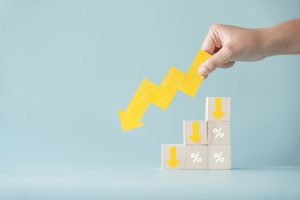What’s happening with interest rates in Australia ?
Interest rates in Australia are projected to remain relatively high through most of 2024, with the Reserve Bank of Australia (RBA) expected to start reducing rates towards the end of the year.
Currently, the cash rate is at 4.35%, which many economists believe is the peak. The major banks—ANZ, Commonwealth Bank, NAB, and Westpac—anticipate the first rate cuts around late 2024, likely by November. These cuts are expected to bring the cash rate down to approximately 4.10%. By mid-2025, the cash rate could fall further, with estimates ranging from 3.60% to as low as 2.85%, depending on the bank.
This gradual easing of rates is contingent on inflation continuing to decline, and economic conditions stabilizing. Inflation has shown signs of improvement, with the RBA targeting a level of 2-3%. However, the pace of these reductions will depend on global economic factors and domestic inflationary pressures.
By late 2025, some forecasts suggest the cash rate may drop to 3.10%, with further cuts possible into 2026, potentially reaching as low as 1.85%.

What’s going to happen next ?
Looking ahead, the government’s cost-of-living relief measures and sustained business investment may support recovery in 2024 and 2025, but risks remain, including persistent inflation, global economic uncertainty, and slowing domestic consumption.
While inflation has cooled compared to the peaks of 2022, its decline has been uneven due to ongoing cost pressures, particularly in essential goods like fuel, housing, and food. Annual inflation remains above the Reserve Bank of Australia’s target range of 2-3%, hovering around 3.8%. This has continued to weigh on consumer spending, with households pulling back on discretionary purchases and essentials, as higher interest rates and stagnating real incomes squeeze budgets.
Key economic indicators paint a somewhat stagnant picture:
GDP Growth: Australia’s GDP growth has been modest, increasing just 0.2% in the June quarter and about 1.5% annually for the 2023-24 fiscal year. However, GDP per capita has fallen for six consecutive quarters, suggesting that population growth is driving most of the expansion.
- Labor Market: The labor market remains resilient but shows signs of cooling. The unemployment rate sits at around 4.1%, up slightly from earlier in 2024, and is expected to rise gradually due to slowing economic activity. Employment growth, while strong in the post-pandemic period, is beginning to ease.
- Household Spending: Household consumption has been weak, falling by 0.2% in the June quarter. Spending on non-essentials, such as travel and events, has particularly declined, along with a 1% drop in grocery spending. This trend reflects higher cost-of-living pressures, with rising interest rates reducing disposable income.
On a positive note, wage growth has slightly outpaced inflation, increasing by 4.1% year-on-year in June 2024, although this is still not enough to significantly boost household savings or consumption. The government’s cost-of-living relief measures introduced in the 2024-25 Budget are expected to offer some support by improving household disposable income, which could, in turn, stimulate consumer spending toward the end of the year.
Sources: Australian Bureau of Statistics




